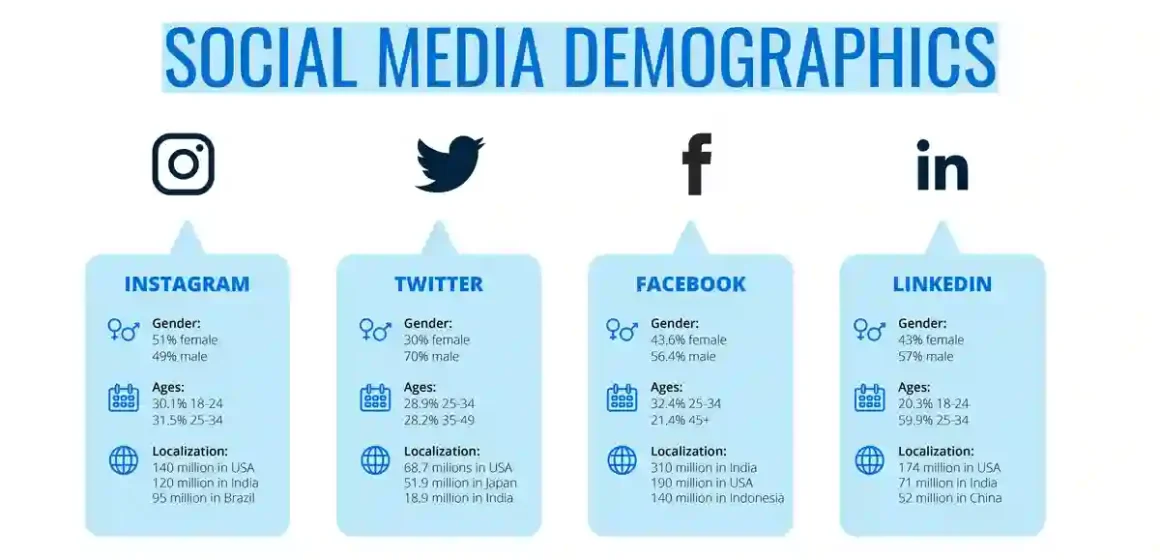In the digital age, social media is not just a tool for personal connections but a powerful platform for businesses to reach their audience. However, crafting the right content and choosing the optimal time to post can significantly impact engagement and reach. Specifically, posting during business hours can offer a unique opportunity for businesses to connect with their audience. This article will delve into strategies for crafting content tailored to business hours on social media, ensuring that your message resonates with your audience when they are most receptive.
Understanding Your Audience
Before crafting your content, it’s crucial to understand your audience. Different businesses cater to diverse demographics, and their online behaviors vary.
1. Demographic Analysis:
Analyze the age, occupation, and lifestyle of your target audience. This understanding will guide the tone, style, and timing of your content.
2. Peak Hours Identification:
Use analytics tools provided by social media platforms to identify when your audience is most active during business hours. This may vary between industries and audience segments.
The Importance of Timing
The timing of your posts is as important as the content itself. Posting during business hours can have several advantages:
1. Increased Visibility:
Posting when your audience is active ensures more people see your content, increasing visibility and engagement.
2. Targeting Professionals:
If your target audience includes professionals, posting during business hours can effectively capture their attention during breaks or in-between tasks.
3. Leveraging Work-Related Content:
Content that is relevant to the workday, such as industry news or professional tips, can have more impact when shared during these hours.
Crafting the Right Content
Content that resonates with an audience during business hours might differ from evening or weekend content.
1. Educational and Informative:
Share content that educates or provides value, such as industry insights, how-to guides, or informative articles.
2. Short and Sweet:
Keep the content concise and engaging. Busy professionals appreciate content that is to the point and easy to digest.
3. Visual Appeal:
Use visuals like infographics or short videos, as they are more engaging and easier to consume during brief breaks.
4. Interactive Posts:
Engage your audience with polls, questions, or thought-provoking statements to encourage interaction during their active hours.
Platform-Specific Strategies
Different platforms cater to varied audiences and require tailored approaches:
1. LinkedIn:
Ideal for B2B content. Focus on industry news, professional development, and company updates. Best times are usually mornings and lunch hours.
2. Twitter:
Great for quick updates, industry news, and engaging with trending topics. Peak times are often during commute hours and lunch breaks.
3. Facebook:
Suitable for a more varied approach, including educational videos, company news, and interactive posts. Mid-morning to early afternoon tends to work well.
4. Instagram:
Visual content reigns supreme here. Use stories and posts to share behind-the-scenes, product highlights, and short tips.
Consistency and Planning
Maintaining a consistent posting schedule is key to keeping your audience engaged.
1. Content Calendar:
Plan your posts in advance with a content calendar. This ensures a steady flow of content and helps in covering a range of relevant topics.
2. Regular Updates:
Regular posting keeps your audience engaged and your brand top-of-mind. Determine a frequency that works for your audience and stick to it.
Engagement and Interaction
Interaction with your audience is crucial, especially during business hours when they are more likely to respond.
1. Prompt Responses:
Monitor your social media channels and respond promptly to comments and messages.
2. Encourage Dialogue:
Ask questions and encourage feedback to foster a sense of community and engagement.
Analytics and Adaptation
Finally, it’s essential to monitor the performance of your content and adapt your strategy accordingly.
1. Performance Tracking:
Use analytics tools to track engagement, reach, and other relevant metrics.
2. Adapt and Evolve:
Be prepared to tweak your content strategy based on what works best. This might involve adjusting the type of content, posting times, or engagement techniques.ConclusionCrafting content for business hours on social media requires a strategic approach that combines understanding your audience, timing your posts correctly, and delivering engaging, relevant content. By focusing on the unique opportunities that business hours present, you can significantly boost your social media presence, engage more effectively with your audience, and achieve your business objectives. With consistency, interaction, and ongoing analysis, your business can harness the power of social media to reach new heights.



Leave a Reply